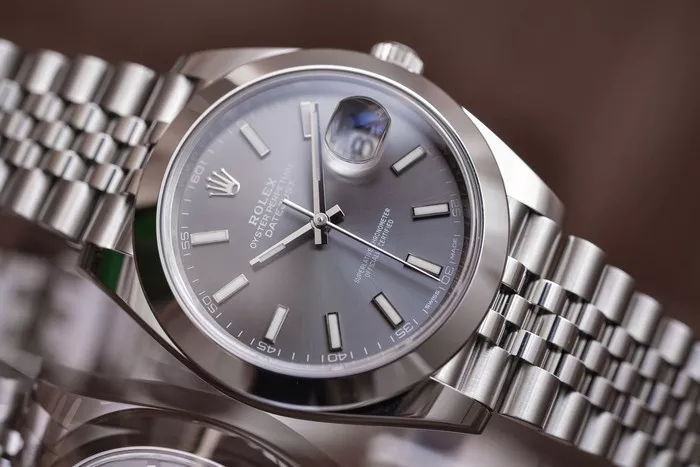The Rolex brand is synonymous with luxury, precision, and timeless style. As a watch enthusiast, understanding the dynamics behind Rolex prices can provide valuable insights into the broader watch industry. Rolex watches have long been a symbol of status and quality, and their pricing trends are often a subject of keen interest among collectors and investors. This article delves into the factors influencing Rolex prices, forecasts for 2024, and the broader implications for the watch industry.
Understanding Rolex Pricing Dynamics
1. Historical Price Trends
Rolex watches have generally seen an increase in value over the years. This trend can be attributed to several factors:
- Brand Heritage and Prestige: Rolex has built a reputation for unparalleled quality and luxury.
- Limited Supply: Rolex controls its production tightly, maintaining scarcity.
- High Demand: Strong demand from both collectors and new buyers keeps prices high.
2. Factors Affecting Rolex Prices
Several key factors influence Rolex pricing:
- Market Demand: High demand can drive prices up.
- Production Numbers: Limited production models often see higher prices.
- Material Costs: Fluctuations in the cost of materials such as gold and platinum can impact prices.
- Economic Conditions: Inflation and currency exchange rates can affect pricing.
- Brand Strategy: Rolex’s pricing strategy plays a significant role in determining the retail and secondary market prices.
Current Market Analysis
1. Recent Trends in Rolex Pricing
Over the past few years, Rolex prices have experienced significant growth. This can be attributed to:
- Increased Interest: A surge in interest from both new buyers and seasoned collectors.
- Secondary Market Dynamics: The secondary market, where pre-owned Rolex watches are sold, has seen substantial price increases, often surpassing retail prices.
2. Impact of Economic Factors
Economic factors can heavily influence luxury goods markets:
- Inflation: Inflationary pressures can lead to increased prices for luxury items, including Rolex watches.
- Currency Fluctuations: Changes in exchange rates can affect Rolex prices globally.
- Interest Rates: Higher interest rates can affect disposable income and, consequently, luxury goods purchasing.
Forecast for Rolex Prices in 2024
1. Supply and Demand Analysis
Rolex’s supply and demand dynamics are crucial in forecasting prices:
- Supply Constraints: Rolex’s limited production will likely continue to support high prices.
- Demand Trends: If demand remains strong, particularly in emerging markets, prices may continue to rise.
2. Economic Predictions
Economic forecasts for 2024 will impact Rolex pricing:
- Inflation Rates: If inflation remains high, it could lead to higher prices.
- Economic Growth: Robust economic growth could increase disposable income and demand for luxury goods.
- Global Events: Geopolitical events and economic uncertainty can influence luxury markets.
3. Rolex’s Strategic Moves
Rolex’s strategic decisions will also play a role:
- Price Adjustments: Rolex may adjust retail prices based on market conditions.
- New Releases: The introduction of new models or discontinuation of existing ones can impact prices.
See Also: How Much Was A Rolex Datejust In 1980
Secondary Market Considerations
1. Collectibility and Rarity
The secondary market often drives significant price movements:
- Limited Editions: Rare and limited-edition Rolex models can fetch premium prices.
- Condition and Provenance: The condition of the watch and its provenance (history) can significantly affect its value.
2. Resale Trends
Resale trends can provide insights into future price movements:
- Resale Value: Watches that hold their value well on the secondary market often influence retail prices.
- Market Sentiment: Sentiment in the resale market can impact primary market prices.
Rolex Pricing vs. Competitors
1. Comparison with Other Luxury Brands
Comparing Rolex pricing with other luxury watch brands can offer perspective:
- Market Position: Rolex often positions itself as a benchmark in the luxury watch market.
- Pricing Strategies: Different brands have varying pricing strategies, which can affect Rolex’s market position.
2. Impact of New Entrants
New entrants to the luxury watch market can also impact Rolex pricing:
- Competitive Pressure: New brands and innovations can influence Rolex’s pricing strategy.
- Market Saturation: Increased competition may affect Rolex’s market share and pricing.
Future Outlook for Rolex Pricing
1. Long-Term Trends
Considering long-term trends can provide a broader perspective:
- Historical Performance: Historically, Rolex prices have appreciated over time.
- Market Evolution: Changes in market dynamics and consumer preferences will influence future pricing.
2. Potential Risks
Understanding potential risks can help in forecasting:
- Economic Downturns: A potential economic downturn could impact luxury goods markets.
- Regulatory Changes: Changes in regulations affecting luxury goods can influence prices.
Conclusion
Rolex prices in 2024 are likely to be influenced by a combination of supply and demand dynamics, economic conditions, and the brand’s strategic decisions. While historical trends suggest a general upward trajectory in prices, various factors could introduce volatility. As a watch enthusiast, staying informed about these factors can help in making informed decisions and understanding the broader trends in the watch industry.

